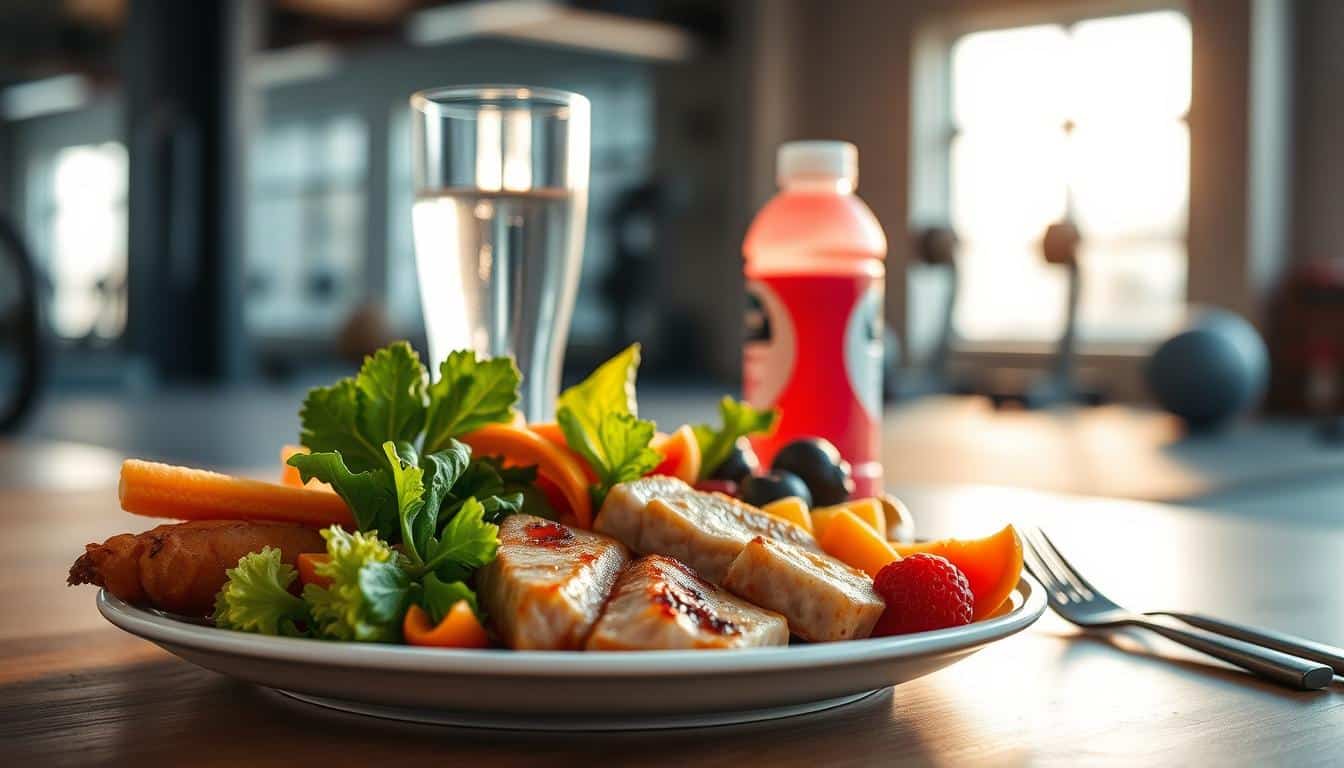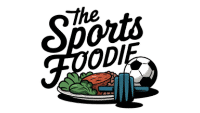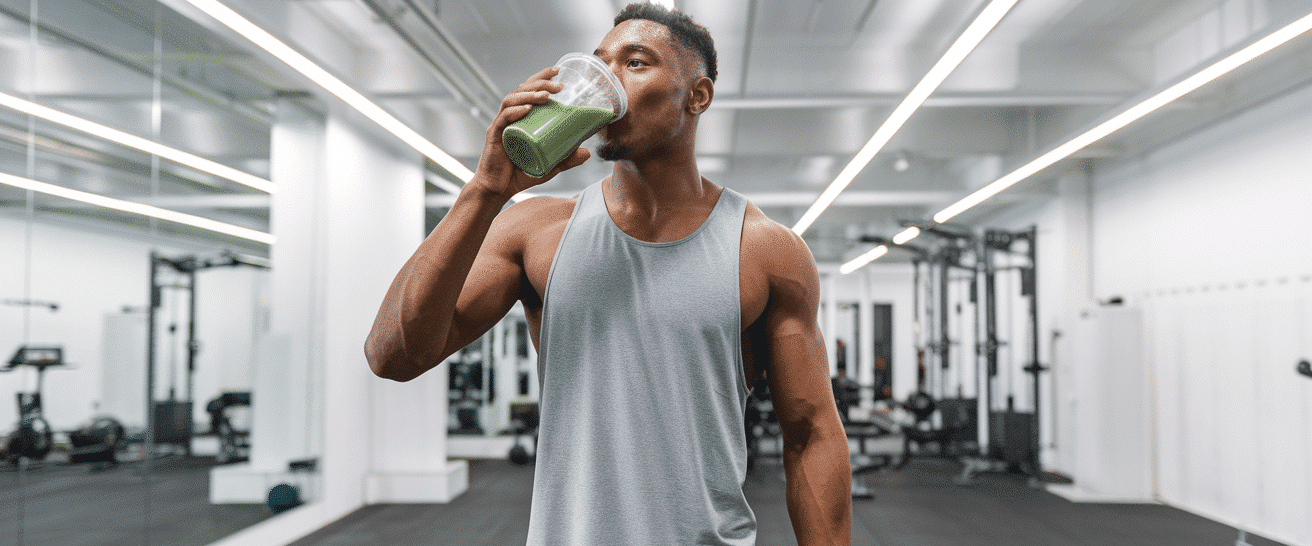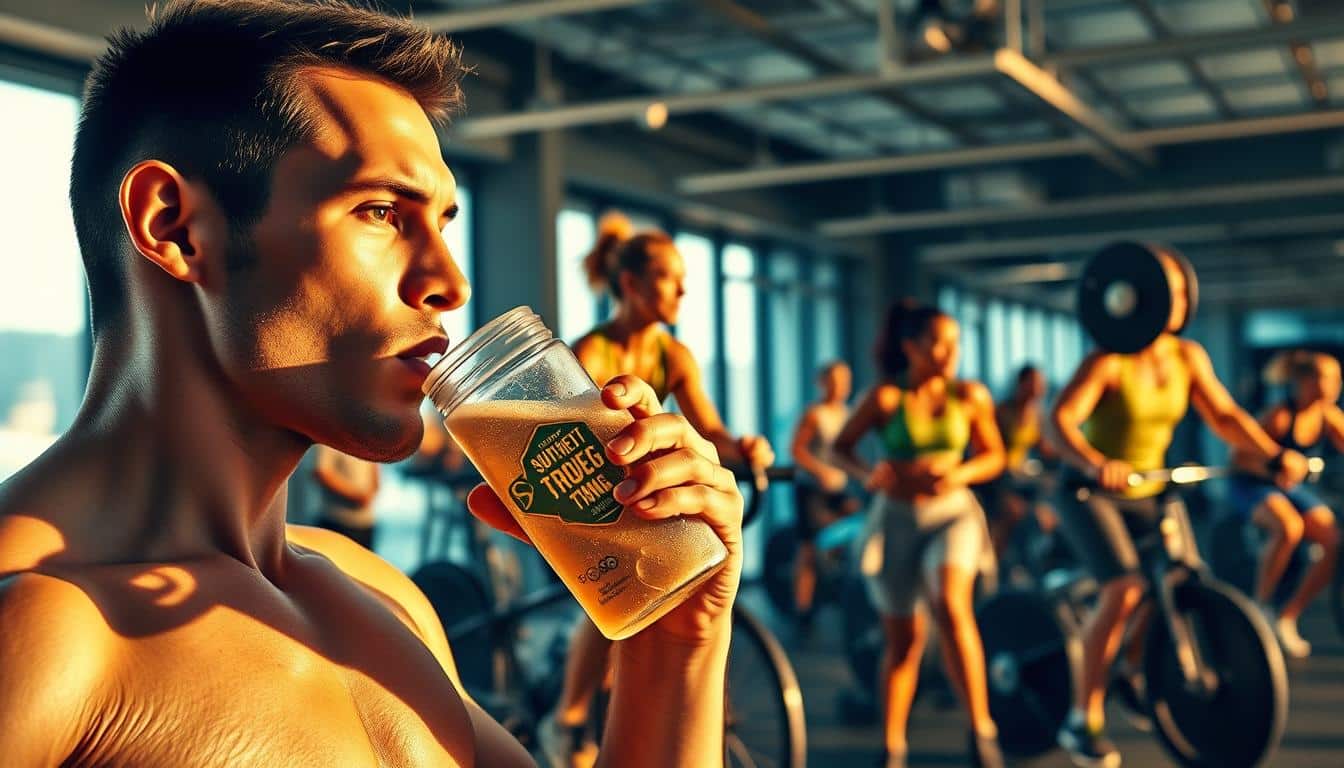What you eat and when you eat it can make a huge difference in your performance. Whether you’re gearing up for a big game or pushing through a tough workout, the right food at the right time fuels your body for success.
Strategic eating isn’t just about calories—it’s about aligning your meals with your training and competition schedule. This approach ensures your energy levels stay high when you need them most. Think of it as giving your body the tools to recover faster and perform better.
In this article, we’ll break down how to time your meals for optimal results. From pre-game carbs to post-workout protein, you’ll learn practical tips to elevate your game. Ready to take your sports performance to the next level? Let’s dive in!
What Is Nutrient Timing and Why Does It Matter?
Fueling your body at the right moments can transform your performance. Nutrient timing means eating specific foods at strategic times to maximize your energy and recovery. Think of it like fueling a car before a long road trip—your body needs the right resources to go the distance.

During training or competition, your muscles rely on glycogen stores for energy. Eating the right foods at the right time helps replenish these stores and supports muscle repair. According to the ISSN, meal timing can significantly impact muscle synthesis and recovery.
Here’s why it matters:
- Better energy: Proper timing keeps your energy levels steady.
- Faster recovery: Your muscles repair quicker with the right nutrients.
- Injury prevention: Consistent fueling reduces the risk of cramps and fatigue.
Rayven Nairn, a sports nutrition expert, explains, “Your body’s engine needs premium fuel to perform at its best.” Whether you’re a marathoner or a weightlifter, nutrient timing can make a noticeable difference. For example, a marathoner might focus on carb-loading before a race, while a weightlifter prioritizes protein for muscle repair.
Poor timing, on the other hand, can lead to fatigue, cramps, and slower recovery. Imagine showing up to a tournament without proper fueling—your performance will likely suffer. By planning your meals around your sports schedule, you can stay at the top of your game.
The Role of Nutrition in Athletic Performance
Proper nutrition is the backbone of any athlete’s success. What you eat directly impacts your energy, recovery, and overall body function. Whether you’re preparing for a competition or recovering from a tough workout, the right nutrition can make all the difference.
Energy Needs for Athletes
Athletes burn more calories than the average person. Endurance athletes, for example, can burn 500–1,000+ extra calories daily. To meet these demands, a balanced diet is essential. According to Johns Hopkins, athletes should aim for a diet of 60% carbohydrates, 20% protein, and 20% fat.
Carbs are your primary energy source, fueling your muscles during intense activity. Protein supports muscle repair, while fats provide long-lasting energy. Without enough fuel, athletes risk fatigue, stress fractures, and other health issues.
Recovery and Muscle Repair
After a training session, your body needs to recover. Protein plays a key role here, helping to rebuild tiny muscle tears caused by exercise. The ISSN recommends 20–40g of protein post-workout for optimal recovery.
Hydration is equally important. Football players, for instance, can lose 5–8 pounds of water during a game. Staying hydrated ensures your muscles function properly and reduces the risk of cramps.
| Macronutrient | Role | Example Foods |
|---|---|---|
| Carbohydrates | Immediate fuel for energy | Pasta, rice, fruits |
| Protein | Repairs and builds muscles | Chicken, eggs, beans |
| Fats | Long-lasting energy source | Avocado, nuts, olive oil |
For a balanced meal, try grilled chicken with pasta and veggies. This combo provides carbohydrates for energy, protein for repair, and essential nutrients for overall health. Remember, too much protein can strain your kidneys, so moderation is key.
Rayven Nairn, a sports nutrition expert, suggests smoothies for athletes with sensitive stomachs. They’re easy to digest and packed with nutrients. By fueling your body correctly, you’ll recover faster and perform better in your sports endeavors.
Nutrient Timing for Athletes: Key Strategies
Eating strategically ensures your body performs when it matters most. By timing your meals around your training and competition, you can maximize energy, recovery, and results. Here’s how to do it right.
- Pre-fuel: Eat oatmeal and eggs 3 hours before a workout. This gives your body time to digest and convert food into energy.
- During: Sip a sports drink during intense activities like a soccer match. It keeps your energy levels steady.
- Recovery: Have chocolate milk within 45 minutes post-workout. It’s packed with carbs and protein to kickstart recovery.
- Daily: Space 4-6 meals with lean protein throughout the day. This keeps your muscles fueled and ready for action.
Here’s a sample schedule for a 7 AM workout:
| Time | Meal |
|---|---|
| 5:30 AM | Banana toast |
| 7:00 AM | Workout |
| 8:00 AM | Chocolate milk |
Don’t skip breakfast before an AM practice. It’s a common mistake that can leave you feeling sluggish. Instead, pack RX bars for tournaments or long days. They’re convenient and packed with nutrients.
Hydration is also key. Aim for one bottle of water per hour when you’re outdoors. Adjust your plan based on your sport. Swimmers might need more carbs, while powerlifters focus on protein.
For more tips on how nutrition affects performance, check out this ultimate guide. With the right timing and food, you’ll be unstoppable.
What to Eat Before a Competition
Preparing your meals strategically before a competition can set the stage for peak performance. The right food at the right time ensures your energy levels are optimized when it matters most. Let’s break it down into three key timeframes.
Weeks Before the Event
Start planning early. Gradually increase your intake of complex carbs like whole-grain bread, rice, and pasta. This helps build up your glycogen stores, which are essential for endurance.
Stick to a 60/20/20 diet—60% carbs, 20% protein, and 20% fat. This balance supports your training competition and keeps your body fueled for long sessions.
24 to 48 Hours Before
Cook familiar foods to avoid digestive issues. Avoid trying new cuisines or heavy meals like cheesesteaks, which take up to four hours to digest.
Focus on hydration. Drink 16oz of water with lemon to stay refreshed. For weigh-ins, opt for light snacks like rice cakes with honey.
3-4 Hours Before
Your pre-event meal should be 50% carbs. A turkey wrap with sweet potato and berries is a great option. If you prefer liquids, try a banana-peanut butter smoothie.
Portion control is key. Aim for palm-sized protein and fist-sized carbs. This ensures you’re fueled without feeling sluggish.
| Time Before Event | Meal Options |
|---|---|
| 3-4 Hours | Turkey wrap, sweet potato, berries |
| 1 Hour | Nature Valley granola bar |
| Last Minute | Banana-peanut butter smoothie |
Remember, NFL players often eat pasta the night before a game. Find what works for you and stick to it. With the right plan, you’ll be ready to crush your competition.
Carb-Loading for Endurance Athletes
Carb-loading is a game-changer for endurance events. It helps your body store glycogen, your primary energy source, for long-lasting stamina. Whether you’re a marathoner, cyclist, or soccer player, this technique can make a big difference in your competition.
For events lasting over 90 minutes, aim for 8-12g of carbohydrates per kilogram of body weight daily. A 70kg athlete, for example, would need around 700g of carbs during the loading phase. Start 48 hours before your event to maximize glycogen storage.
- Best for: Marathoners, cyclists, and soccer players.
- 2-day method: Consume 10g of carbs per kg of body weight.
- Food examples: Bagels, raisins, and white rice.
- Timing: Begin loading 48 hours before your race.
- Avoid: Too much fiber—stick to easy-to-digest options like white rice.
Glycogen stored through carb-loading can fuel up to two hours of intense exercise. Pair this with tapering your training—reduce mileage while increasing carbohydrates. This combo ensures your body is fully prepared.
Here’s a sample carb-loading day:
| Meal | Food |
|---|---|
| Breakfast | Pancakes with syrup and fruit |
| Lunch | Pasta with marinara sauce |
| Snack | Whole-grain bread with honey |
| Dinner | Rice with grilled chicken |
On race morning, keep it simple with toast, jam, and a banana. Don’t worry if you gain 2-3 pounds of water weight—it’s normal and shows your body is fully fueled. With the right plan, you’ll be ready to crush your competition.
What to Eat During a Competition
Keeping your energy up during a competition is all about smart fueling. Whether you’re running a marathon or playing a game, the right food can keep you going strong. Here’s how to stay fueled and hydrated when it matters most.
For endurance events, aim for 30-60g of carbs per hour. Quick options like applesauce or gel packs are easy to digest and provide instant energy. If you’re on the move, try Honey Stinger waffles or dried fruit for a quick boost.
Hydration is just as important. Sip water every 15 minutes—don’t wait until you’re thirsty. In extreme heat, add electrolyte tablets to your bottle to replace lost minerals. For team sports, orange slices at halftime are a classic and effective choice.
Avoid energy drinks during the event. They can cause a crash and leave you feeling worse. Instead, stick to tried-and-true options you’ve practiced with during scrimmages. For example, bikers often use clip-on feed bags with dates for quick access.
Here’s a quick guide to mid-event fueling:
| Activity | Fuel Option |
|---|---|
| Endurance | Applesauce, gel packs |
| Team Sports | Orange slices, dried fruit |
| Biking | Dates, GU gel taped to frame |
| Transition Events | Smoothie between heats |
Remember, never try new foods on race day. Stick to what you’ve practiced with to avoid surprises. With the right plan, you’ll stay fueled and ready to crush your competition.
Post-Workout Nutrition for Recovery
Recovering right after a workout is just as important as the workout itself. What you eat within minutes of finishing can make or break your recovery. Let’s dive into the best strategies to fuel your muscles and get back stronger.
Start with a protein-packed snack. Studies show consuming 20-40g of protein within two hours of exercise boosts muscle repair. A whey protein shake is a quick and effective option. It spikes protein synthesis, helping your muscles recover faster.
Don’t forget carbs! Pair your protein with carbs like sweet potato fries or a banana. This combo replenishes glycogen stores and keeps your energy steady. According to the ISSN, aim for 0.25g of protein per pound of body weight post-exercise.
Hydration is key too. Swap plain water for coconut water to replace lost electrolytes. Staying hydrated helps reduce soreness and speeds up recovery. For a quick fix, try tart cherry juice—it’s proven to reduce inflammation.
Here’s a sample post-workout meal plan:
| Meal | Ingredients |
|---|---|
| Protein Shake | Whey protein, low-fat milk, banana |
| Snack | Greek yogurt, granola, berries |
| Dinner | Grilled chicken, quinoa, roasted veggies |
For vegetarians, lentil soup with quinoa is a great option. It’s packed with nutrients and easy to digest. And before bed, grab a bowl of cottage cheese. It’s slow-digesting, providing your muscles with protein overnight.
Avoid waiting too long to eat. Skipping a meal for three hours post-exercise can double soreness. Instead, chug a protein shake or grab a quick snack like a granola bar. Your body will thank you!
Foods to Avoid Before a Competition
Choosing the wrong foods before a competition can sabotage your performance. What you eat—or don’t eat—can impact your energy, focus, and even your stomach. Here’s a list of foods to steer clear of and smarter swaps to keep you at your best.
- Fried chicken: High-fat foods like bacon or fried chicken take up to six hours to digest, leaving you sluggish.
- Bean salads: Foods high in fiber, like beans, can cause bloating and discomfort during your event.
- Broccoli: Cruciferous veggies like broccoli and cauliflower are gas culprits—skip them before a big day.
- Energy bars with >5g fiber: While convenient, these can upset your stomach. Opt for low-fiber options instead.
- Milk: If you’re lactose-sensitive, dairy can lead to cramps or discomfort. Try almond milk as a swap.
Why Avoid These Foods?
High-fat and high-fiber foods slow digestion, making you feel heavy and uncomfortable. For example, bacon takes six hours to digest, while fiber-rich foods like lentils can cause bloating. Stick to easy-to-digest options to keep your energy steady.
Smart Swaps:
| Avoid | Swap |
|---|---|
| Peanut butter | Almond butter |
| Energy bars | Rice cakes with honey |
| Milk | Almond milk |
Pro Tips:
- Caffeine: Stick to your usual intake—don’t overdo it.
- Traveling: Avoid airport fast food. Pack rice cakes or granola bars in your gear bag.
- Emergency fix: Keep Tums on hand for unexpected stomach issues.
By avoiding these foods and making smart swaps, you’ll stay light, energized, and ready to crush your competition.
Conclusion
Mastering your meal plan can transform how you perform and recover. Start by timing your carbs around workouts and spacing protein every three hours. Practice fueling strategies during training to find what works best for your body.
Here’s a simple tip: begin with one change, like adding a post-workout shake. For personalized advice, meet with a sports dietitian. They can help you fine-tune your plan for peak performance.
Ready to take action? Try our 7-day meal plan template. Small tweaks can lead to big results, like boosting your PRs. Remember, avoid quick fixes—consistent effort pays off.
Take inspiration from a triathlete who cut 10 minutes off their race time by optimizing their meal timing. Download our cheat sheet to get started today. Your turn to fuel greatness!


